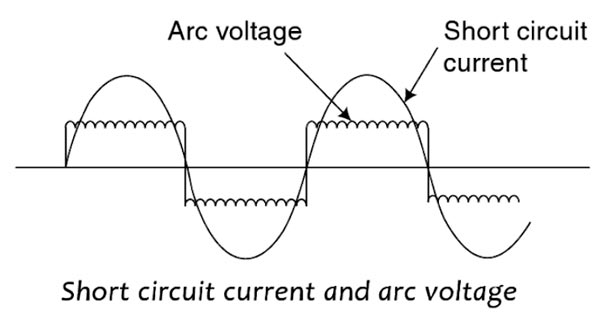The arc voltage produced in A.C circuit breaker is always
Right Answer is:
In phase with the arc current
SOLUTION
An electric arc is a visible plasma discharge between two electrodes that is caused by electrical current ionizing gasses in the air.
The electric arc is a self-sustained electrical discharge that exhibits a low voltage drop, is capable of sustaining large currents, and behaves like a non-linear resistor.
As the volt-ampere characteristics of an arc voltage are negative i.e arc voltage is high when the arc current is low and vice-versa. In order to maintain the ionization of the gas, when the arc is effectively cooled, the magnitude of the arc voltage must increase. What this means is simply that as the arc cools, the cooling efficiency increases the deionization of the arc space, which in turn increases the arc resistance. As a consequence of the increase in resistance, the short circuit current and the phase angle are reduced and thus the likelihood of a successful interruption is significantly enhanced.
The voltage drop across the arc is called arc voltage. As the arc path is purely resistive, the arc voltage is in phase with the arc current. The magnitude of the arc voltage is very low, amounting to only a few percent of the rated voltage. A typical value maybe about 3 percent of the rated voltage.

